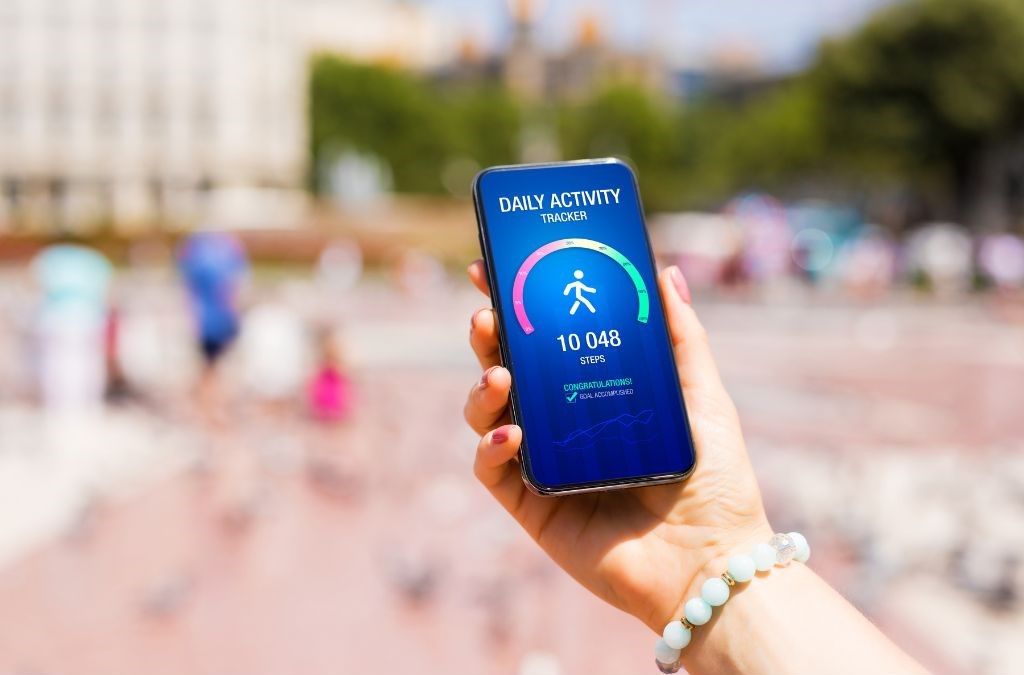Ah, the digital age! A time when our phones are smarter than some old computers and where answers are just a click away. But rewind a couple of decades, and things were a tad different. When I began my journey in physiotherapy, the landscape was more about hands-on techniques and face-to-face interactions. Digital? That was more about fingers tapping on a keyboard than the world of online resources we know today.
But as the years rolled on, so did technology. And just like everyone else, I found myself at a crossroads – to adapt or to stay rooted. I chose the former. From diving into online journals to integrating tech tools like Celtron in my practice, the digital wave reshaped my approach, making it more dynamic and expansive.
In this section, we’ll journey through this transformation, exploring the challenges, the learnings, and the undeniable benefits of embracing the digital world in the realm of physiotherapy. So, whether you’re a fellow physiotherapist, a doctor, or someone curious about the blend of healthcare and technology.
Embracing Online Studies for Updated Learning
The world of medicine and physiotherapy is ever-evolving. New research emerges, techniques get refined, and fresh perspectives come to light. Staying updated isn’t just a choice; it’s a necessity. And in this digital age, online studies have become the beacon for continuous learning.
Remember the days of lugging around heavy medical textbooks or waiting for a journal subscription to arrive by post? Those days are long gone. Today, a plethora of information is available at your fingertips. Websites, e-journals, webinars, and online courses have made it easier than ever to keep abreast of the latest in the field.

But why is online learning gaining such traction, especially in the medical community?
- Accessibility: No matter where you are, be it Pune or Patna, online resources break geographical barriers. All you need is a decent internet connection, and a world of knowledge opens up.
- Up-to-date Information: Online platforms often update their content regularly. This ensures that you’re not just learning, but you’re learning the latest.
- Flexibility: Got a free hour between patient appointments? That’s enough to dive into a short online course or skim through a recent research paper. Learn at your pace, on your time.
- Diverse Perspectives: Online platforms bring together experts from around the globe. This means you’re not just getting a regional view, but a global perspective on various topics.
- Interactive Learning: Many online courses offer interactive modules, quizzes, and forums. This not only makes learning engaging but also aids in better retention.
However, a word of caution: the internet is vast, and not all sources are credible. It’s crucial to rely on reputed platforms, peer-reviewed journals, and recognized institutions. After all, in a field as critical as healthcare, there’s no room for half-baked information.
So, whether you’re a budding physiotherapist, an established doctor, or a patient eager to understand more, online studies offer a treasure trove of knowledge. Dive in, but ensure you’re swimming in the right waters.
Streamlining Patient Communication through Digital Platforms

In today’s fast-paced world, effective communication is the backbone of any successful healthcare practice. And with the digital revolution, the way we communicate has seen a significant shift. Gone are the days of solely relying on face-to-face consultations or phone calls. Digital platforms have ushered in a new era of streamlined patient communication.
1. Instant Messaging for Quick Queries: Have a burning question about a recent diagnosis or a therapy session? Digital platforms offer instant messaging features, allowing patients to shoot a quick message and get timely responses. It’s like having a mini consultation without the wait!
2. Video Consultations: For those who can’t make it to the clinic or are residing in remote areas, video consultations are a boon. They offer the personal touch of a face-to-face meeting, bridging distances and ensuring that quality care is accessible to all.
3. Digital Health Records: Remember the hassle of maintaining and carrying bulky medical files for every visit? Digital platforms now allow for electronic health records, making it easier for both patients and doctors to track medical histories, treatments, and progress.
4. Appointment Scheduling and Reminders: Missed appointments can be a thing of the past. With online scheduling tools, patients can book, reschedule, or cancel appointments with ease. Plus, automated reminders ensure that you never forget an upcoming session.
5. Feedback and Reviews: Digital platforms provide an avenue for patients to share feedback, helping healthcare professionals improve their services. It’s a two-way street, fostering transparency and trust.
6. Educational Content Sharing: For those keen on understanding their health better, many platforms offer educational content – be it articles, videos, or infographics. Knowledge is power, and when it’s just a click away, it empowers patients to make informed decisions.
While the benefits are numerous, it’s essential to choose platforms that prioritize data privacy and security. After all, health information is sensitive, and its confidentiality must be upheld.
The digital platforms are revolutionizing the way patients and healthcare professionals communicate. They’re making interactions more efficient, transparent, and patient-centric. So, whether you’re a physiotherapist, a doctor, or someone seeking medical guidance, embracing these platforms can significantly enhance your healthcare journey.
Continuous Innovation: Need of All Times
In the dynamic realm of healthcare, innovation is not just a luxury; it’s a necessity. And much like how Google transformed the way we access information, continuous innovation is reshaping the healthcare landscape, especially for physiotherapists, doctors, and patients.
1. Google’s Footprint in Healthcare Evolution: Just as Google has been a beacon of innovation in the digital world, healthcare professionals are constantly adapting to meet the ever-changing needs of their patients. The search giant’s commitment to making information universally accessible has set a benchmark for healthcare to be more patient-centric and informed.
2. Embracing Digital Tools: From Google’s health-related search features to advanced physiotherapy apps, technology is revolutionizing patient care. These tools not only enhance diagnosis and treatment but also empower patients with knowledge about their health.

3. Beyond Traditional Boundaries: Innovation often means challenging the status quo. Just as Google disrupted the information space, healthcare professionals are exploring unconventional methods and therapies, backed by digital data and insights, to offer better care.
4. Patient-Centric Innovations: With platforms like Google making information more accessible, patients today are better informed. This shift demands innovations that prioritize patient understanding, involvement, and feedback, leading to more effective treatments.
5. The Role of Lifelong Learning: The digital age, spearheaded by giants like Google, emphasizes the importance of continuous learning. For healthcare professionals, staying updated with the latest research and digital tools ensures they provide the best care possible.
6. Collaborative Innovations: The spirit of collaboration, much like the open-source ethos of the digital world, is vital in healthcare. Sharing knowledge, research, and resources can lead to groundbreaking solutions that benefit everyone.
In conclusion, the drive for continuous innovation in healthcare mirrors the transformative journey of platforms like Google. It’s a reminder that to offer the best, one must be willing to evolve, adapt, and innovate relentlessly.
Educating the Next Generation Physiotherapists in the Digital World
In a world where Google answers our most pressing questions within seconds, it’s evident that the digital age is reshaping every facet of our lives. And the realm of physiotherapy is no exception.
As we stand on the cusp of this digital revolution, the next generation of physiotherapists isn’t just learning about muscles and movements; they’re diving deep into the digital tools and platforms that will define the future of healthcare.
So, whether you’re a seasoned physiotherapist, an aspiring student, or a patient curious about the future of your treatment, let’s explore how the digital world is molding the physiotherapists of tomorrow.

Interactive Digital Tools for Engaging Physiotherapy Lessons
In today’s fast-paced digital era, the way we learn and absorb information has undergone a significant transformation. Especially in fields like physiotherapy, where understanding the intricate details of the human body is crucial, interactive digital tools have emerged as game-changers.
- Virtual Reality (VR) in Physiotherapy: The power of VR is truly unparalleled. Imagine being a student and having the ability to step inside the human body, walking alongside the spine, or floating past the muscles and tendons. This immersive experience provides a deep understanding that traditional methods might miss. For patients, it’s a revelation. They can literally “see” their issues and the healing process, making them more invested in their recovery.
- Augmented Reality (AR) Apps: AR brings a blend of the real and digital worlds. For a physiotherapist, this means being able to point a device at a patient and see a layered view of bones, muscles, and blood vessels. It’s like having x-ray vision! This can be invaluable during diagnosis and treatment, offering insights that were previously hidden.
- 3D Anatomy Software: The human body is complex, and understanding it requires depth—literally. With 3D anatomy software, learners can peel back layers of the body, rotate organs, and even simulate various conditions. It’s a dynamic way to study and understand the intricate interplay of our bodily systems.
- Gamified Learning Platforms: Engagement is key to retention. By turning physiotherapy lessons into interactive games or challenges, students are more likely to engage and retain information. It’s a fun, competitive way to learn, and the benefits are manifold.
- Online Video Libraries: The beauty of online videos is their accessibility. Whether you’re a seasoned physiotherapist looking to brush up on a technique or a student trying to understand a concept, there’s likely a video tutorial for it. Platforms like YouTube are brimming with demonstrations, expert talks, and patient experiences that can offer a wealth of knowledge.
Incorporating these tools into the learning and practice of physiotherapy doesn’t just enhance understanding; it revolutionizes it. As we move forward, the fusion of technology and healthcare will only become more intertwined, making it imperative for today’s physiotherapists to be digitally adept.
Preparing Future Physiotherapists for a Tech-Driven World
The world is evolving at a breakneck pace, and so is the realm of physiotherapy. With the influx of technology, the line between traditional physiotherapy practices and modern tech-driven methods is blurring. So, how do we ensure that the next generation of physiotherapists is ready to ride this wave of change?
- Incorporating Tech in Curriculum: It’s high time educational institutions integrate modules on digital tools and software into their physiotherapy courses. From understanding the basics of tele-rehabilitation platforms to getting hands-on experience with AR and VR tools, the curriculum should reflect the future.
- Workshops on Digital Ethics: With great power comes great responsibility. As physiotherapists start relying more on technology, it’s crucial to understand the ethics surrounding digital patient data, online consultations, and virtual treatment plans.
- Promoting Research in Tech-Based Rehab: Encouraging students to undertake research projects that explore the efficacy of tech-driven rehabilitation methods can pave the way for groundbreaking discoveries. This not only enhances their analytical skills but also keeps the field ever-evolving.
- Collaborations with Tech Companies: Tie-ups with tech giants and startups can provide students with real-world exposure. From internships to guest lectures by industry experts, these collaborations can offer invaluable insights into the practical applications of technology in physiotherapy.
- Soft Skills for the Digital Age: While technical know-how is essential, soft skills like online communication, virtual empathy, and digital bedside manners are equally crucial. Training sessions focusing on these can help budding physiotherapists navigate the challenges of online consultations.
The fusion of technology and physiotherapy is not just a trend; it’s the future. By equipping the next generation with the right tools, knowledge, and mindset, we’re not just preparing them for a tech-driven world; we’re setting the stage for a brighter, more accessible future in healthcare.
Read More: